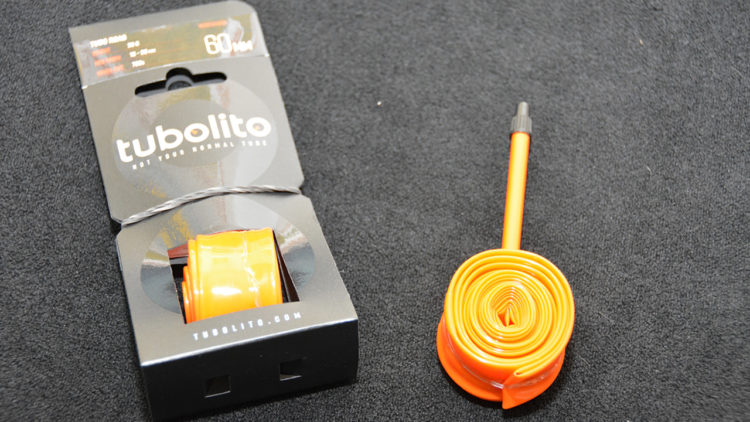I’m afraid this Tubolito review is not a good one. I suffered multiple defects with the product, and I thought it worth documenting what happened so others can read about it and then decide before making a purchase.
What’s wrong with regular inner tubes?
Okay, so first off, standard butyl rubber bicycle tubes frustrate the hell out of me. I know from working in the bike industry that they’re dirt cheap to make and have the highest markup of any product sold in brick-and-mortar cycle shops. Despite that, manufacturers seem intent on making even more profit at the expense of quality because butyl tubes are very prone to defects unless you spring for more expensive name-brand models. Even then, you have to know which name brands to pick because they’re not created equal (hint, stay away from the ones sold under the name of major bike makers because they’re cheap tubes put in pretty boxes). Most often—for me at least—tubes generally fail where the valve stem is joined to the tube. It’s either at the edge of the wider circular reinforced patch where it meets the normal thickness of the tube, or the valve stem itself pulls out of the reinforced patch. The problems seem to be more common than they used to be, and at first, I thought it was an issue with my rims. But, I’ve replaced those with two other road wheelsets, and the same issues crop up time and again.
Why not go tubeless?
Years ago, I switched to tubeless on my mountain bike, and, after a few teething problems, I learned how to seat them and not get sealant everywhere. I admit I’ve never been stranded with a flat since the change, but I don’t like having to periodically remove the tires to strip out the dried sealant (AKA snot balls) before renewing with fresh goo. I’ve resisted going the same route on my road bike. I’m not sure I can articulate a good reason why, but I have visions of problems with the higher pressure and getting a river of sealant down my back when I hit a large piece of glass (it’s well documented that I can be a slow adopter of new technology sometimes).
Enter Tubolito
Anyway, I recently came across a glowing Tubolito review on Bike Rumor and was intrigued. Here’s a company trying to rethink tubes entirely with new materials and significantly lower weight. I like it a lot.
Tubolitos are made from thermoplastic elastomer, and the company claims on its website that they’re two-thirds lighter than standard tubes and two times stronger.
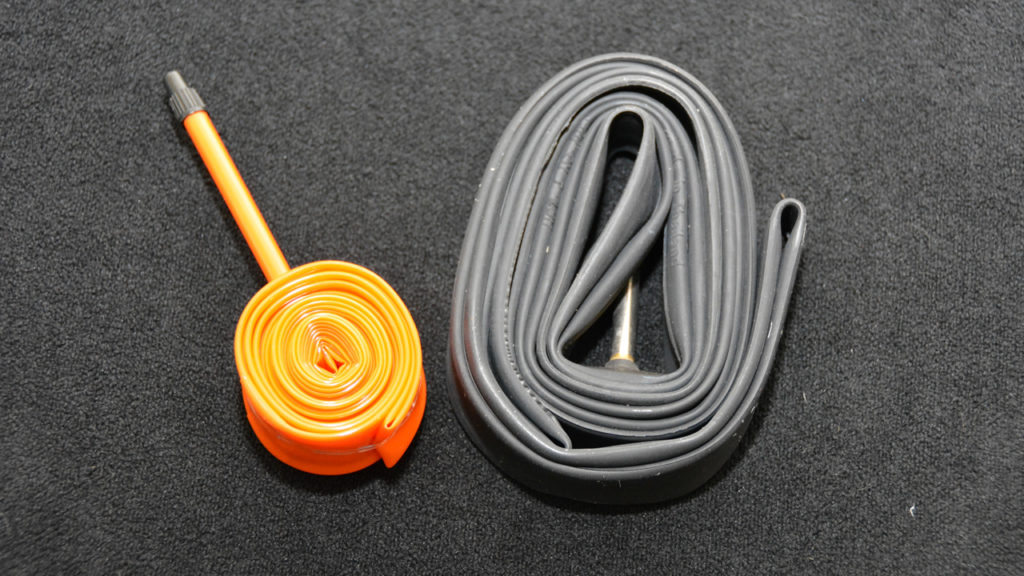 Tubolito inner tube compared with a butyl tube
Tubolito inner tube compared with a butyl tube
I’ve experimented with other tube materials – like latex – with poor results, but Tubolito seemed like a departure in a whole new direction, and I decided to order some.
Tubolito tubes cost what?!
If you thought your local bike shop was sticking it to you charging $10 for a tube, watch out because the price of a Tubolito will make your jaw hit the floor. A road tube ordered directly from them in Austria will set you back $35 plus shipping, and you’ll need their proprietary patch kit (which I didn’t originally realize is NOT included), and that’s another five bucks. All told, I dropped $137 on three tubes and two patch kits for my little foray into high-tech tubishness.
My Tubolitos arrive
Despite coming all the way from Austria, Tubolito ships DHL, and they’ll arrive on your doorstep in well under a week. For some reason, they ship signature required, so leave a signed note on your door for the delivery person.
Out of the box, the tubes are impressive. I plopped one on my cheapo digital scale, and it came in at 1.48 ounces. A Michelin Air Comp I weighed at the same time registered 2.86 – so not exactly two-thirds lighter like the company claims, but then the Air Comp is lighter than a “standard tube” I guess.
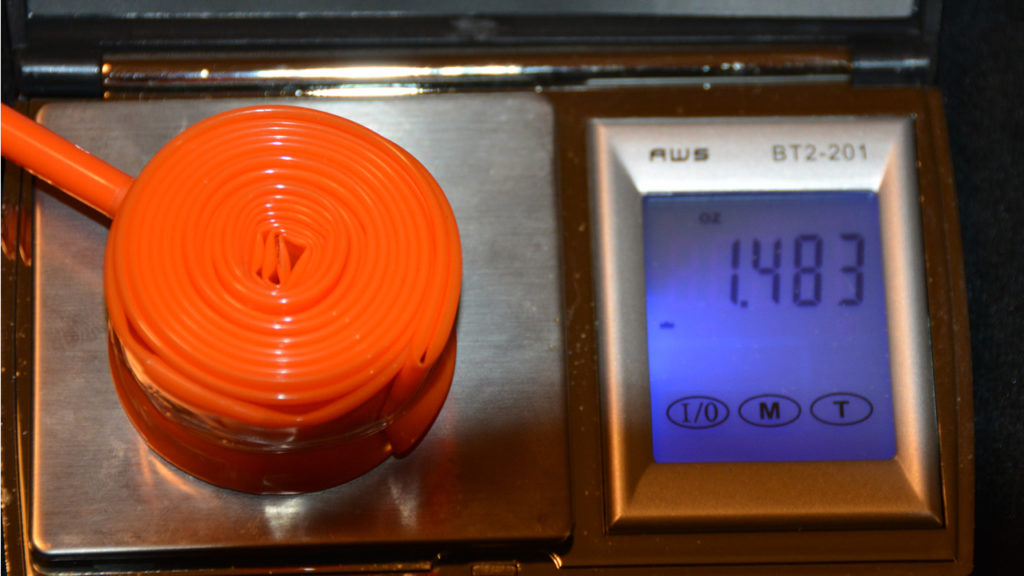 Tubolito inner tube weight
Tubolito inner tube weight
When it comes to the construction, it appears that a seamless thermoplastic elastomer tube is produced. A hole is then punched in it, and the valve stem is pushed through from the inside and glued in place. Then, the two ends of the tube are put together and sealed. You’re left with the kind of seam which reminds me of the way old latex tubes were joined together.
They also come with a little rubber washer at the base of the stem, which I believe is meant to fill the gap left where the stem is glued into the tube and deal with what I suspect is a flaw in the design. More on that later in this Tubolito review.
Tubolito installation
It’s hard to explain, but the thermoplastic elastomer is slightly more rigid than butyl when you lightly inflate it, so getting it inside your tires and getting them to stay in while you mount the tires is a snap. There’s really no issue with a little bit of tube getting under the bead of the tire and causing a blowout, etc. like can happen with butyl tubes.
I’m not a fan of the bright orange valve stems, but I assume that’s intentional to make them a conversation starter and “spread the word” in the cycling community.
Here’s where my Tubolito review starts to go bad
After getting the tubes installed and inflated, I left my bike overnight with the intention of riding on them for the first time the next afternoon. That was not to be. The next day, the front tire was flat. Subsequent inspection revealed the Tubolito failed at the point where the valve stem is glued into the tube due to poor adhesion between the two components. I suspect the little rubber ring that comes installed around the valve stem is an attempt to keep this from happening, but in this case, it failed anyway.
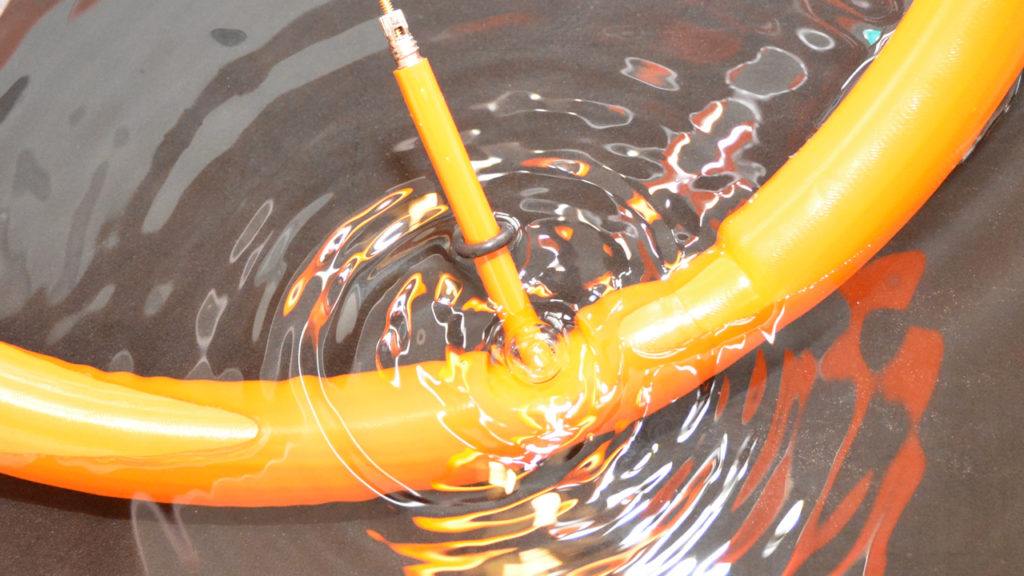 Tubolito inner tube number one leaks at the base of the valve stem
Tubolito inner tube number one leaks at the base of the valve stem
I emailed the company about it, and they were apologetic, offered to replace the tube and asked for a second chance, so I put in my third tube and kept riding.
About a week later, on a 75-mile ride, my front tire started to go flat again. This time, the tube leaked where the valve core is screwed into the valve stem. Tightening the valve core only made it worse.
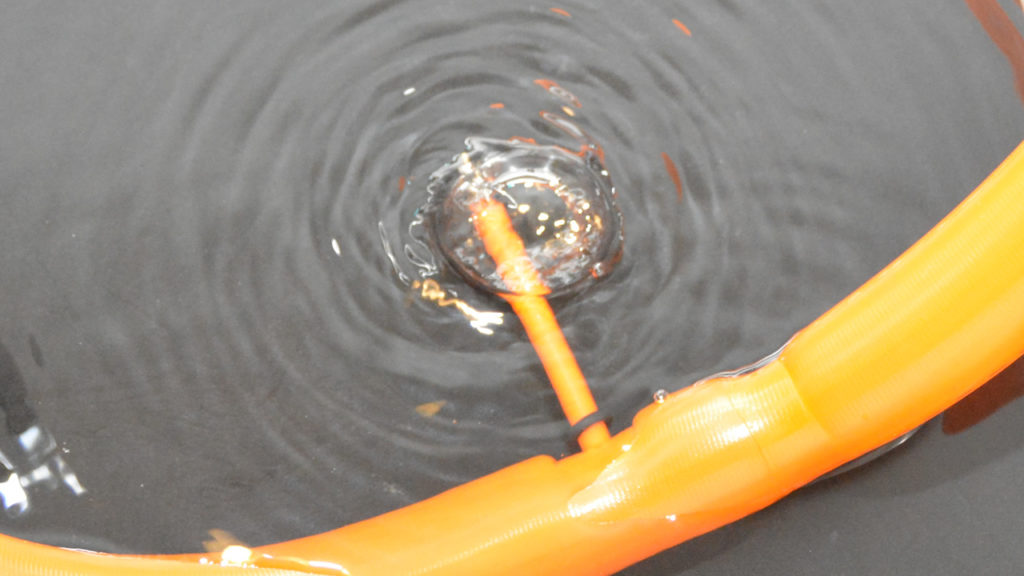 Tubolito inner tube number two leaks around the valve core
Tubolito inner tube number two leaks around the valve core
So then, I was left with two useless Tubolitos and zero confidence in the product after two flats just days after I started using them. I emailed the company about it and received an immediate refund.
Tubolito final thoughts
I hate posting a negative Tubolito review because as I said at the top, I really like the concept. I’m not sure if I just had incredibly bad luck, they just suffered some quality control issues, or if it could be a bad product overall. Every manufacturer suffers defects to some extent, but two out of three in my case is frankly ridiculous. Still, there are glowing reviews out there from writers who claim to have logged hundreds of miles on them, and it’s hard to imagine the company would ever have gotten off the ground in the first place if two-thirds of their products were defective. It’s a mystery to me. Unlike other products I’ve experimented with, my trial of Tubolito tubes didn’t cost me a penny, so the company is at least willing to stand behind its product. Keep that in mind if you want to see if you have better luck than I did.
UPDATE
I recently had to choose between going tubeless or tubes when I installed a wider set of tires on my gravel bike. Tubeless is clearly the way to go mountain biking, but I’m still on the fence for road and gravel. Sealants are messy, leave big gobs of dried snot inside tires, and there’s no way to tell if your sealant has dried out (and become worthless) without pulling off the tires fairly regularly. It’s just a lot more maintenance.
Anyway, despite my experience with Tubolito, I decided to try thermoplastic tubes again. This time I went with the Pirelli Smartube version. They also have a plastic valve stem, but the join between the stem and tube seems more sturdy. I’ve been running them for a couple of months now.
I have gotten a flat tire using them, and you should be aware that the recommended gluing time when patching a thermoplastic tube is 30 minutes—so not something you want to hang about and do on the side of the road. They do patch well though, which I think is important given the high price, etc.

